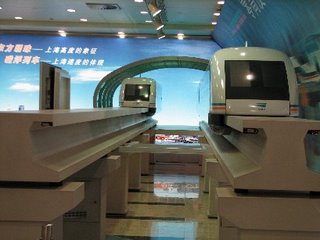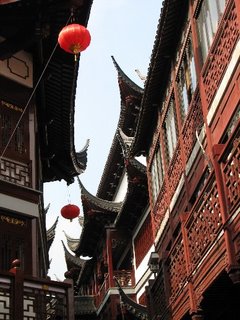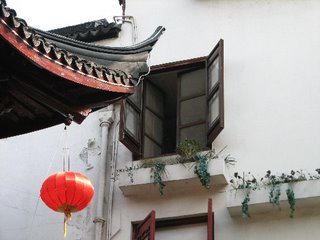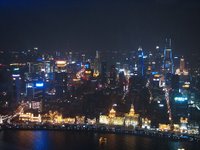Suzhou 苏州, 15-16 October 2006
We spent our 2nd day at Suzhou. It was about 1 1/2 hours drive from Shanghai to Suzhou.
Shigong Mountain 石公山
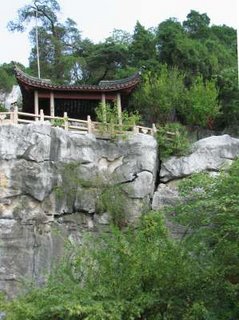
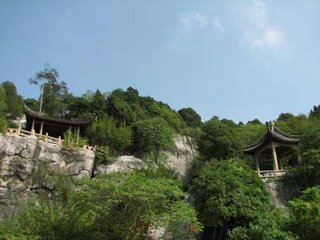
Before we reached Suzhou city centre, we paid a visit to Shigong Mountain 石公山, which located at Taihu Xishan, 太湖西山 (literally means West mountain of Huge lake). Taihu Lake is the second largest freshwater lake of China. It is around 2,427,800,000sqm (Or it is equivalent to 4 Singapores!!!) However, the mean water depth is only around 1.9m and the lake is full of all knid of fish, clams (pearl), crab and other organism...
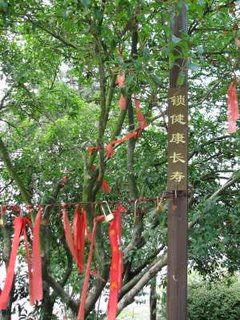
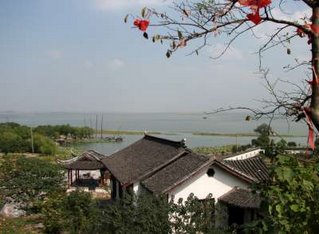
1. "lock" the health and longevity. (make a wish at the wishing tree)
2. A view from highest point of Shigong Mountain.
Linwu Cave 林屋洞
After that, we moved to another destination, a natural underground cave called Linwu Cave, 林屋洞. This cave already has few billion years old, it was named the ninth wonderful cave of China. Million of thousands year ago, the cave was full of Taihu Lake water, and apparently mil years ago was stayed by the deities.
Tiger Hill 虎丘
Tiger Hill has 2500 years hictory, originally it is a mausoleum of King Wu (吴王) but later it became a temple.
Sword Pool of Tiger Hill 虎丘剑池
Tower of Tiger Hill, Landmark of Suzhou
The leaning pagoda of China was was constructed in the year 959. It leans to the north almost imperceptibly by 3.5 degrees. This tower has 7 storeys and 8 sides, it came from this idiom: 救人一命胜造七级浮屠.
Suzhou 苏州
Population : 6.6 million
History : estimated 2500 years
Local delicacy : Guihua Fish 桂花鱼
Special Product: Silk
Unlike Shanghai, Suzhou is a city garden. Buildings in Suzhou are not allowed to build higher than 15m (around 5 storeys high)!! Therefore Suzhou has no any skyscrapers or high rise buildings. It is a well-planned city, clean, tidy and comfortable.
Guanqian Street 观前街
Shopping area in Suzhou...
Lion Grove Garden 狮子林 (first built in 1342, rebuilt 1918)
Next morning, we visited one of the famous garden .
The Lion Grove garden was first built in 1342 by the Monk Tianru and other disciples in memory of their teacher, the monk Zhongfeng. The garden is approximately 10,000 square meters and contains 22 pavilions, 71 steles, and numerous other works of art. The garden is famous for its rockery, which is mostly made of limestone taken from Taihu lake.
The rocks have been piled up into forms resembling lions. The name of the garden "Lion Grove," came from a reference to lions in a Buddhist story which included descriptions of a rocky place in a bamboo forest (resembling the garden). How many LIONS you can find from this piece of rock art?
It is said that Emperor Qianlong 乾隆皇帝(18th century) visited the site six times and inscribed the word "真有趣" (literary means very interesting). However, "真有趣" sounds too common, hence the word ‘有’ had been deleted became "Zhenqu" 真趣 (true delight) to describe the garden's beauty. The inscription is still on display in a pavilion of the same name.

